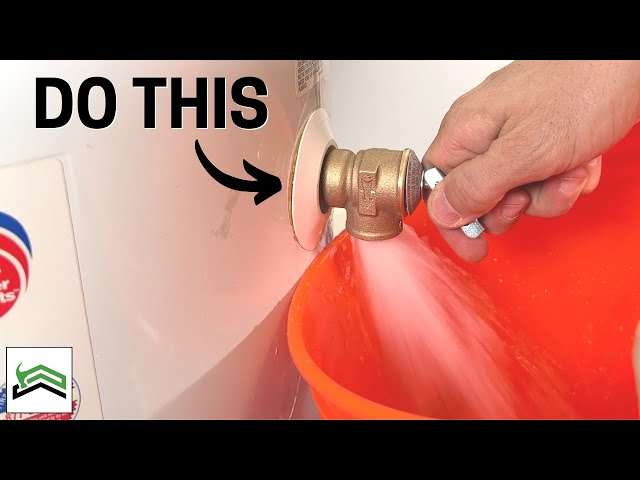Discovering your hot water heater pressure relief valve leaking after replacement can be a frustrating and concerning experience. It often leads to questions about the installation process, the valve itself, and the overall health of your water heating system. A properly functioning pressure relief valve is crucial for safety, preventing potentially dangerous pressure build-up within the tank. Understanding the common causes of this issue and the steps you can take to diagnose and address it is essential for maintaining a safe and efficient hot water system. Let’s explore the possible reasons why your hot water heater pressure relief valve might be exhibiting this troublesome leak.
Understanding the Pressure Relief Valve
The pressure relief valve (PRV), sometimes called a temperature and pressure relief valve (TPR valve), is a safety device designed to automatically release pressure if it exceeds a safe level. It’s a critical component in any hot water heater system, preventing the tank from potentially exploding due to excessive pressure. This valve is typically located near the top of the hot water tank and has a discharge pipe that directs any released water away from the unit.
Common Causes of Leaking After Replacement
- High Water Pressure: Excessively high water pressure in your home’s plumbing system can cause the PRV to open and release water. A pressure regulator can solve this;
- Overheating: If the thermostat on your hot water heater is set too high or is malfunctioning, the water inside the tank can overheat, leading to increased pressure and activation of the PRV.
- Sediment Build-up: Sediment accumulating at the bottom of the tank can interfere with the thermostat’s accuracy, potentially causing overheating.
- Faulty New Valve: While rare, the replacement valve itself could be defective.
- Expansion Issues: Water expands when heated. If there’s no expansion tank or it’s not working correctly, the pressure from expansion can trigger the PRV.
Troubleshooting the Leak
Before calling a plumber, you can perform some basic troubleshooting to identify the source of the problem. Start by checking your home’s water pressure. A pressure gauge can be attached to an outdoor faucet to read the pressure. Ideally, it should be between 40 and 60 psi. If it’s higher, a pressure regulator may be needed. Also, examine the hot water heater’s thermostat setting. It should be set to a reasonable temperature, typically around 120 degrees Fahrenheit. A final diagnostic might be to check if the new hot water heater pressure relief valve leaking after replacement is rated for the correct PSI for your system.
Solutions and Prevention
Addressing a leaking PRV requires a methodical approach. Here are some potential solutions:
- Install a Pressure Regulator: If high water pressure is the cause, a pressure regulator will maintain a consistent and safe pressure level.
- Adjust the Thermostat: Lowering the thermostat setting can prevent overheating.
- Flush the Tank: Periodically flushing the hot water tank removes sediment build-up.
- Inspect the Expansion Tank: Ensure the expansion tank is properly sized and functioning correctly. If the expansion tank is waterlogged, it needs to be replaced.
- Replace the Valve: If the valve is indeed faulty, replace it with a new one from a reputable manufacturer.
When to Call a Professional
While some troubleshooting and solutions can be done yourself, it’s important to know when to call a licensed plumber. If you’re not comfortable working with plumbing or electrical components, it’s best to leave it to the professionals. Additionally, if you’ve tried the troubleshooting steps and the hot water heater pressure relief valve leaking after replacement persists, a plumber can accurately diagnose the problem and implement the appropriate solution.
Ultimately, a leaking pressure relief valve is a safety concern that needs to be addressed promptly. Remember, understanding the causes, troubleshooting effectively, and taking appropriate action are essential steps in maintaining a safe and efficient hot water system. If you’re unsure about anything, always consult with a qualified plumber. Finding the cause of the hot water heater pressure relief valve leaking after replacement is key to finding a solution.

